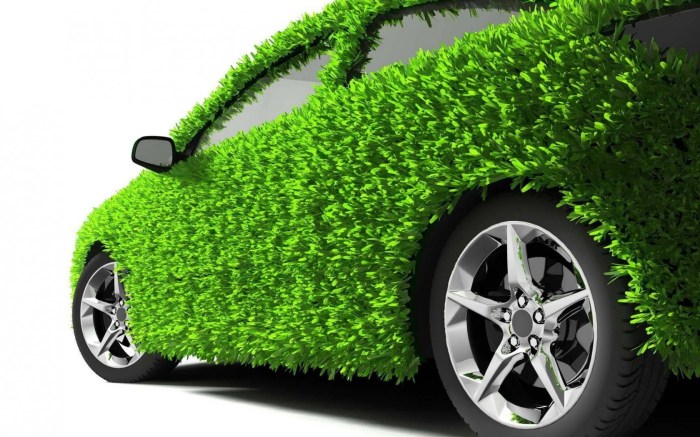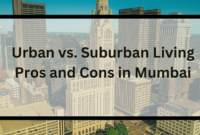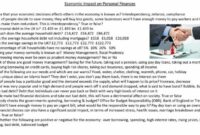Building a sustainable luxury lifestyle for future generations is no longer a niche concept; it’s a necessity. This exploration delves into the evolving definition of luxury, moving beyond ostentatious displays of wealth to encompass ethical sourcing, mindful consumption, and long-term environmental responsibility. We’ll examine how businesses are innovating to create truly sustainable luxury goods, the role of consumers in driving this change, and the exciting potential for a future where luxury and sustainability coexist harmoniously.
From analyzing the environmental impact of various materials to exploring circular economy models and innovative packaging solutions, we’ll uncover practical strategies for individuals and businesses to embrace a more sustainable approach to luxury. We’ll also investigate the financial and reputational benefits for brands that prioritize sustainability, highlighting successful case studies and emerging trends shaping the future of this vital sector.
Defining Sustainable Luxury
Sustainable luxury represents a shift in the traditional understanding of luxury, moving beyond mere opulence to encompass ethical and environmental responsibility. It prioritizes longevity, craftsmanship, and minimal environmental impact, creating products and experiences that are both desirable and mindful of future generations. This approach contrasts sharply with the often wasteful and environmentally damaging practices associated with traditional luxury.
Core Principles of a Sustainable Luxury Lifestyle
The core principles of a sustainable luxury lifestyle revolve around conscious consumption and production. This includes prioritizing quality over quantity, choosing durable and ethically sourced materials, supporting brands committed to transparency and sustainability, and minimizing waste throughout the product lifecycle. It’s about appreciating the inherent value of a well-made item and its lasting impact, rather than chasing fleeting trends or superficial displays of wealth.
This conscious approach extends beyond material goods to encompass experiences – prioritizing mindful travel, supporting local communities, and engaging in activities that promote well-being and environmental stewardship.
Traditional Luxury versus Sustainable Luxury Practices
Traditional luxury often emphasizes exclusivity, rarity, and a high price point, frequently achieved through the use of scarce materials and resource-intensive production methods. This often translates into a high environmental footprint and questionable ethical sourcing practices. Sustainable luxury, conversely, prioritizes ethical sourcing, responsible manufacturing, and durability. The focus shifts from mere exclusivity to inclusivity and accessibility, promoting longevity and reducing waste.
While price points may still be high due to the quality of materials and craftsmanship, the overall value proposition includes the positive environmental and social impact.
Ethical Considerations in Creating Sustainable Luxury Goods
Creating sustainable luxury goods necessitates a commitment to ethical sourcing and fair labor practices. This includes ensuring that materials are sourced responsibly, without exploiting workers or damaging ecosystems. Transparency throughout the supply chain is paramount, allowing consumers to understand the origin of materials and the conditions under which products are made. Fair wages, safe working conditions, and respect for human rights are fundamental ethical considerations that must be addressed at every stage of production.
Sustainable luxury brands often invest in traceability systems and certifications to ensure accountability and build consumer trust.
Environmental Impact of Different Luxury Production Methods
Different luxury production methods have vastly different environmental impacts. For example, the production of leather goods often involves significant water and energy consumption, as well as the release of greenhouse gases. The cultivation of certain luxury materials, such as cashmere or silk, can also have significant environmental consequences, including habitat destruction and pesticide use. Sustainable alternatives focus on minimizing these impacts through innovative technologies, closed-loop systems, and the use of recycled or renewable materials.
The manufacturing processes themselves can also be optimized to reduce waste and energy consumption.
Environmental Footprint of Various Luxury Materials
The table below compares the environmental footprint of various luxury materials, considering their source, environmental impact, and potential alternatives.
| Material | Source | Environmental Impact | Alternatives |
|---|---|---|---|
| Leather | Animal hides | High water and energy consumption, greenhouse gas emissions, potential for deforestation | Plant-based leather (e.g., mushroom leather, pineapple leather), recycled leather |
| Silk | Silkworms | Potential for habitat loss, pesticide use, ethical concerns regarding silkworm farming | Organic silk, plant-based alternatives (e.g., Tencel, hemp) |
| Cashmere | Cashmere goats | Overgrazing, potential for habitat degradation | Recycled cashmere, plant-based alternatives (e.g., alpaca wool) |
| Synthetics (e.g., polyester) | Petroleum-based | High carbon footprint, microplastic pollution | Recycled polyester, bio-based synthetics |
Sustainable Consumption and Production
Building a sustainable luxury lifestyle requires a fundamental shift in how luxury goods are created and consumed. This involves minimizing environmental impact throughout the entire lifecycle of a product, from sourcing raw materials to end-of-life disposal. The goal is to create a system where luxury doesn’t come at the expense of future generations’ well-being.
Strategies for Minimizing Waste in the Luxury Goods Sector
The luxury sector, often associated with extravagance, can paradoxically lead the way in waste reduction. This requires a comprehensive approach that tackles waste at every stage of production and consumption. This involves implementing stricter quality control measures to reduce defects, optimizing production processes to minimize material waste, and designing products for durability and repairability. Furthermore, embracing innovative recycling and upcycling techniques can transform waste into valuable resources.
Companies are exploring innovative methods such as using recycled materials in production and designing products with modularity, allowing for easy repair and replacement of parts.
Circular Economy in Luxury Products
The circular economy model, focused on reducing, reusing, and recycling, is particularly relevant to luxury goods. Instead of a linear model (make, use, dispose), a circular approach keeps products in use for longer, maximizing their value and minimizing waste. This involves designing products for durability and repairability, offering repair and refurbishment services, and creating systems for collecting and recycling used luxury items.
Luxury brands can establish take-back programs, allowing consumers to return used products for recycling or refurbishment. This not only reduces waste but also fosters brand loyalty and strengthens the brand’s commitment to sustainability. For example, some high-end watchmakers now offer refurbishment services for their timepieces, extending their lifespan and reducing the demand for new production.
Innovative Sustainable Packaging Solutions for Luxury Items
Luxury packaging often contributes significantly to waste. However, innovative solutions are emerging. Biodegradable and compostable materials, such as mushroom packaging or seaweed-based alternatives, are replacing traditional plastic and cardboard. Reusable and refillable containers are gaining popularity, reducing packaging waste over the product’s lifespan. Luxury brands can leverage minimalist packaging designs, reducing material usage while maintaining a premium aesthetic.
For instance, a high-end cosmetics brand might use recycled glass containers and minimal paper inserts, emphasizing the quality of the product itself over excessive packaging.
Extending the Lifespan of Luxury Goods Through Repair and Refurbishment
Repair and refurbishment services are crucial for extending the lifespan of luxury goods. By offering professional repair services, brands can help customers maintain their valuable items, reducing the need for replacements. This approach aligns with the growing consumer demand for durable and repairable products. Additionally, offering refurbishment services can give pre-owned luxury items a second life, reducing waste and offering more affordable options to consumers.
Brands can partner with skilled artisans and craftspeople to provide high-quality repair and refurbishment services, further supporting local communities.
Actions Individuals Can Take to Consume Luxury Goods More Sustainably
Consumers play a vital role in building a sustainable luxury ecosystem. By making conscious choices, individuals can significantly reduce the environmental impact of their luxury purchases.
- Invest in durable, high-quality items designed for longevity.
- Prioritize brands with strong sustainability commitments and transparent supply chains.
- Repair and refurbish existing luxury goods instead of replacing them.
- Support brands offering take-back programs and recycling initiatives.
- Choose luxury items made from sustainable and ethically sourced materials.
- Consider purchasing pre-owned luxury goods to extend the life of existing products.
- Minimize impulse purchases and carefully consider the environmental impact before buying.
Investing in Sustainable Luxury Brands
Investing in sustainable luxury brands represents a compelling opportunity for both ethical and financial returns. While traditional luxury often focuses solely on exclusivity and brand heritage, the growing awareness of environmental and social issues is driving a shift towards brands that prioritize sustainability alongside luxury. This shift presents a unique investment landscape, demanding a careful evaluation of brand practices and future market trends.
Key Characteristics of Environmentally and Socially Responsible Luxury Brands
Environmentally and socially responsible luxury brands demonstrate a commitment to minimizing their environmental footprint and upholding ethical labor practices throughout their supply chains. This commitment manifests in several key ways. They prioritize the use of sustainable materials, such as recycled fabrics, organic cotton, or ethically sourced precious metals. They often employ innovative manufacturing processes designed to reduce waste and energy consumption.
Furthermore, they typically support fair wages and safe working conditions for their employees and those in their supply chains, often engaging in transparent and traceable sourcing practices. Finally, many actively support environmental conservation initiatives or social causes aligned with their brand values.
Investment Potential of Sustainable vs. Traditional Luxury Brands
The investment potential of sustainable luxury brands compared to traditional luxury brands is a complex issue with no single answer. Traditional luxury brands often boast established brand recognition and a loyal customer base, leading to consistent profitability. However, the growing consumer demand for ethical and sustainable products presents a significant growth opportunity for sustainable luxury brands. This increased demand is likely to drive higher valuations and returns for companies that successfully navigate the challenges of integrating sustainability into their business models.
The long-term viability of traditional luxury brands may be affected by evolving consumer preferences, regulatory pressures, and the growing scrutiny of their environmental and social impact. A diversified investment strategy that includes both traditional and sustainable luxury brands may be the most prudent approach.
Examples of Successful Sustainable Luxury Business Models
Several brands have successfully integrated sustainability into their business models, demonstrating that profitability and ethical practices are not mutually exclusive. Stella McCartney, for instance, has built a successful luxury brand entirely on sustainable principles, using innovative materials and ethical manufacturing processes. Patagonia, while not strictly a luxury brand, is a prime example of a company that prioritizes environmental responsibility and has cultivated a strong and loyal customer base.
Their commitment to repair and reuse initiatives demonstrates a long-term approach to sustainability, building brand trust and fostering customer loyalty. These examples highlight the potential for significant financial success while upholding strong ethical standards.
The Role of Transparency and Traceability in Building Consumer Trust
Transparency and traceability are crucial for building consumer trust in sustainable luxury brands. Consumers are increasingly demanding to know where their products come from and how they are made. Brands that provide clear and detailed information about their supply chains, materials sourcing, and manufacturing processes are more likely to build trust and loyalty. This transparency not only reassures consumers about the ethical and environmental integrity of the products but also reduces the risk of negative publicity related to unethical labor practices or environmental damage.
Traceability systems, using technologies like blockchain, can further enhance transparency and accountability.
Case Study: Financial and Reputational Benefits of Sustainable Luxury Practices
Consider a hypothetical luxury apparel brand, “Evergreen,” that transitioned to sustainable practices. Initially, the cost of switching to organic cotton and implementing ethical manufacturing processes increased production costs. However, Evergreen invested in transparent communication, highlighting its commitment to sustainability through detailed online information and engaging social media campaigns. This increased brand awareness and attracted a new segment of ethically conscious consumers.
Sales grew significantly, driven by both increased demand and a higher price point justified by the superior quality and ethical sourcing of the materials. Furthermore, Evergreen’s positive brand image garnered media attention and awards, further enhancing its reputation and attracting investment. This case demonstrates how a commitment to sustainability can lead to both financial gains and improved brand reputation, enhancing long-term value.
The Future of Sustainable Luxury: Building A Sustainable Luxury Lifestyle For Future Generations
The future of luxury hinges on its ability to adapt and innovate within the constraints of environmental responsibility and social justice. A truly sustainable luxury sector will not only endure but thrive, driven by consumer demand for ethically produced, environmentally conscious goods and a growing understanding of the interconnectedness of economic prosperity, social equity, and environmental health. This necessitates a paradigm shift, embracing technological advancements, mitigating climate risks, and fostering inclusive growth.
Technological Advancements Supporting Sustainable Luxury Practices
Technological innovation plays a crucial role in minimizing the environmental footprint of luxury goods production. Precision manufacturing techniques, like 3D printing, allow for on-demand production, reducing waste and optimizing material usage. Blockchain technology offers enhanced traceability and transparency throughout the supply chain, ensuring ethical sourcing and combating counterfeiting. Furthermore, advancements in material science are leading to the development of innovative, sustainable alternatives to traditional luxury materials, such as lab-grown diamonds, plant-based leather alternatives, and recycled fabrics.
These technologies contribute to a circular economy model, minimizing waste and maximizing resource efficiency. For instance, brands are utilizing AI-powered design software to optimize patterns and reduce fabric waste in garment production.
Climate Change Impact and Mitigation Strategies in the Luxury Industry
Climate change poses significant threats to the luxury industry, impacting the availability of raw materials (e.g., disrupting agricultural cycles for fine fabrics, affecting the harvesting of precious woods), increasing production costs due to extreme weather events, and potentially damaging the brand image through negative environmental associations. Mitigation strategies involve investing in renewable energy sources for production facilities, reducing carbon emissions through efficient logistics and transportation, and sourcing materials from sustainably managed sources.
Luxury brands can also actively participate in carbon offsetting programs and promote sustainable consumption patterns among their customers, for example, by extending the lifespan of products through repair and refurbishment services. The impact of extreme weather on harvests of materials like cashmere or silk highlights the urgency of these efforts.
Sustainable Luxury’s Contribution to Social Equity and Economic Development
Sustainable luxury practices can drive positive social and economic change by fostering fair labor practices throughout the supply chain, ensuring decent wages and safe working conditions for artisans and workers. Investing in local communities and supporting traditional craftsmanship can revitalize economies and preserve cultural heritage. Sustainable luxury brands often prioritize ethical sourcing, partnering with small-scale producers and farmers, ensuring fair prices and empowering marginalized communities.
For example, a brand might partner with a community in India to sustainably source silk, providing economic opportunities and preserving traditional weaving techniques. This creates a virtuous cycle where environmental sustainability, social equity, and economic development reinforce each other.
Emerging Trends in Sustainable Luxury Design and Manufacturing
Several emerging trends reflect the industry’s growing commitment to sustainability. Upcycling and repurposing of materials are gaining traction, transforming discarded items into high-value luxury goods. Bio-based materials derived from renewable sources, such as mycelium (mushroom roots) and algae, are being explored as sustainable alternatives to traditional materials. Circular design principles are being integrated into product design, emphasizing durability, repairability, and recyclability.
This focus extends beyond the materials themselves, incorporating aspects like eco-friendly packaging and reduced transportation distances. For example, brands are increasingly using recycled packaging and opting for local production to minimize their carbon footprint.
Vision for a Sustainable Luxury Future
A sustainable luxury future envisions a sector where luxury goods are produced responsibly, using renewable resources and minimizing environmental impact. It is a future where ethical labor practices are the norm, empowering artisans and workers. This future fosters a circular economy, minimizing waste and maximizing resource efficiency. Consumers actively participate in this transition by valuing transparency, durability, and the ethical story behind the products they purchase.
Ultimately, this model ensures that future generations can enjoy the beauty and craftsmanship of luxury goods without compromising the planet’s well-being. This vision is not utopian; many brands are already implementing these practices, demonstrating that luxury and sustainability are not mutually exclusive.
Communicating Sustainable Luxury Values
Effectively communicating the value proposition of sustainable luxury requires a multifaceted approach that goes beyond simple marketing slogans. It necessitates a genuine commitment to sustainability throughout the entire brand lifecycle and a transparent dialogue with consumers. This involves showcasing not only the product’s quality and aesthetic appeal but also the ethical and environmental considerations behind its creation.
Marketing Campaign Design for Sustainable Luxury, Building a sustainable luxury lifestyle for future generations
A successful marketing campaign for sustainable luxury should focus on storytelling and transparency. Instead of solely highlighting product features, the campaign should emphasize the journey of the product—from sustainably sourced materials to ethical manufacturing processes and responsible packaging. For example, a campaign for a sustainable cashmere sweater could feature interviews with the farmers who raised the goats, showcasing their commitment to animal welfare and sustainable grazing practices.
High-quality visuals, emphasizing the natural beauty of the materials and the craftsmanship involved, are crucial. The campaign should also highlight the brand’s commitment to carbon neutrality or other environmental initiatives, using verifiable data and third-party certifications to bolster credibility. The overall tone should be sophisticated and aspirational, aligning with the luxury brand image while clearly communicating the sustainability message.
Building Brand Authenticity Around Sustainable Practices
Building brand authenticity around sustainable practices requires more than just marketing claims; it demands genuine commitment and transparency. This involves openly sharing information about the brand’s supply chain, manufacturing processes, and environmental impact. Independent certifications, such as B Corp or Fair Trade, can lend credibility to these claims. Regularly auditing and reporting on environmental and social performance demonstrates accountability.
Transparency builds trust with consumers, who are increasingly discerning about the brands they support. For example, a luxury watch brand could openly disclose the origin of its materials, the energy efficiency of its manufacturing facilities, and its efforts to reduce waste. This transparency not only builds trust but also strengthens the brand’s narrative.
Engaging Consumers in Conversations About Sustainable Luxury
Engaging consumers requires creating opportunities for dialogue and interaction. This can be achieved through social media campaigns that encourage user-generated content, interactive websites that provide detailed information about the brand’s sustainability initiatives, and in-store events that highlight the ethical and environmental aspects of the products. Collaborating with influencers and thought leaders who share the brand’s values can further amplify the message.
Hosting workshops or webinars on sustainable living can foster a sense of community and deepen consumer engagement. Responding directly to consumer questions and concerns on social media platforms demonstrates a commitment to transparency and accountability.
The Importance of Storytelling in Promoting Sustainable Luxury Values
Storytelling is a powerful tool for communicating the values of sustainable luxury. By sharing the stories of the people and processes involved in creating the products, brands can create an emotional connection with consumers. This could involve showcasing the artisans who craft the products, highlighting the sustainable farming practices used to source materials, or telling the story of the brand’s commitment to environmental responsibility.
These narratives humanize the brand and make the sustainability message more relatable and engaging. A compelling story can resonate deeply with consumers, fostering loyalty and brand advocacy. For instance, a luxury handbag brand might tell the story of a family-run tannery that uses traditional, eco-friendly methods passed down through generations.
Visual Representation of Sustainable Luxury
The visual representation could be a photograph of a beautifully crafted, sustainable luxury item – perhaps a hand-woven silk scarf – displayed against a backdrop of a lush, thriving natural landscape. The scarf’s rich colors and intricate details would highlight the craftsmanship and quality, while the natural setting would emphasize the sustainable sourcing of materials and the brand’s respect for the environment.
The image could also subtly incorporate elements such as recycled materials in the packaging or a label highlighting eco-friendly certifications. The overall effect should be one of sophisticated elegance and understated luxury, conveying a sense of harmony between human creativity and the natural world. The image would evoke a feeling of timeless quality and responsible consumption, reinforcing the brand’s commitment to sustainable luxury.
Closure

Source: thetechpanda.com
Ultimately, building a sustainable luxury lifestyle for future generations requires a collective effort. By understanding the principles of sustainable luxury, making conscious consumption choices, and supporting responsible brands, we can create a future where luxury is not at odds with environmental protection and social equity. The journey towards a truly sustainable luxury sector is ongoing, but the rewards – a healthier planet and a more equitable society – are well worth the effort.
Let’s embrace the challenge and craft a legacy of responsible luxury for generations to come.
Quick FAQs
What are some everyday actions I can take to be more sustainable in my luxury consumption?
Prioritize quality over quantity, buying fewer, higher-quality items that last longer. Repair and repurpose existing luxury goods instead of discarding them. Choose brands with transparent and sustainable practices. Support initiatives that promote recycling and responsible waste management.
How can I tell if a luxury brand is truly committed to sustainability?
Look for third-party certifications (e.g., B Corp, Fair Trade), transparent supply chains, detailed information about material sourcing and production processes, and evidence of efforts to reduce environmental impact and improve social conditions.
Is sustainable luxury more expensive than traditional luxury?
While some sustainable luxury goods might have a higher upfront cost due to ethical sourcing and production methods, the long-term value proposition often outweighs this. Higher quality, durability, and reduced waste contribute to long-term cost savings.
What role does technology play in sustainable luxury?
Technology plays a crucial role through innovations in material science (e.g., bio-based materials), efficient manufacturing processes, traceability technologies (blockchain), and sustainable packaging solutions. It also allows for better data collection and analysis to monitor environmental impact.
What is the future outlook for the sustainable luxury market?
The future of sustainable luxury is bright. Growing consumer demand for ethical and environmentally responsible products, coupled with technological advancements and innovative business models, suggests a rapidly expanding market with significant growth potential.




